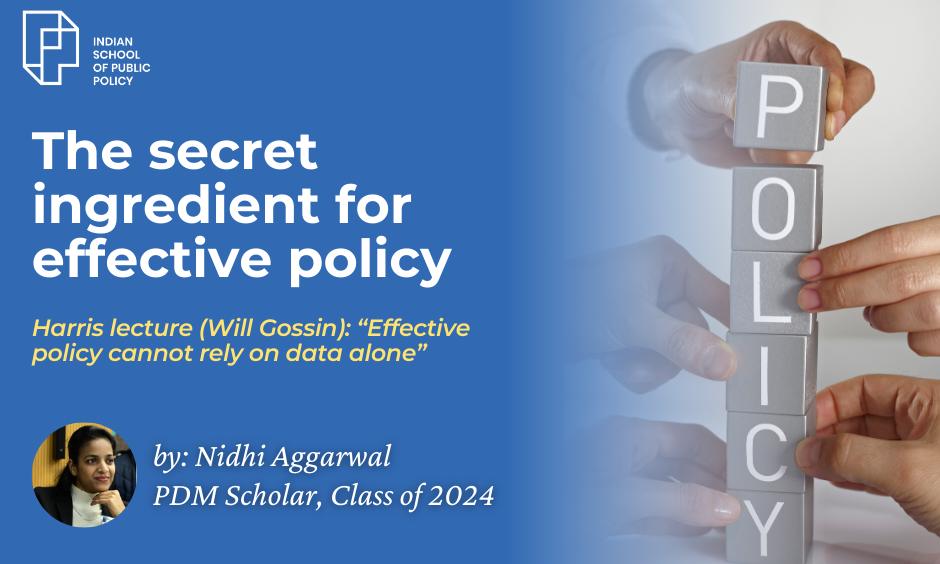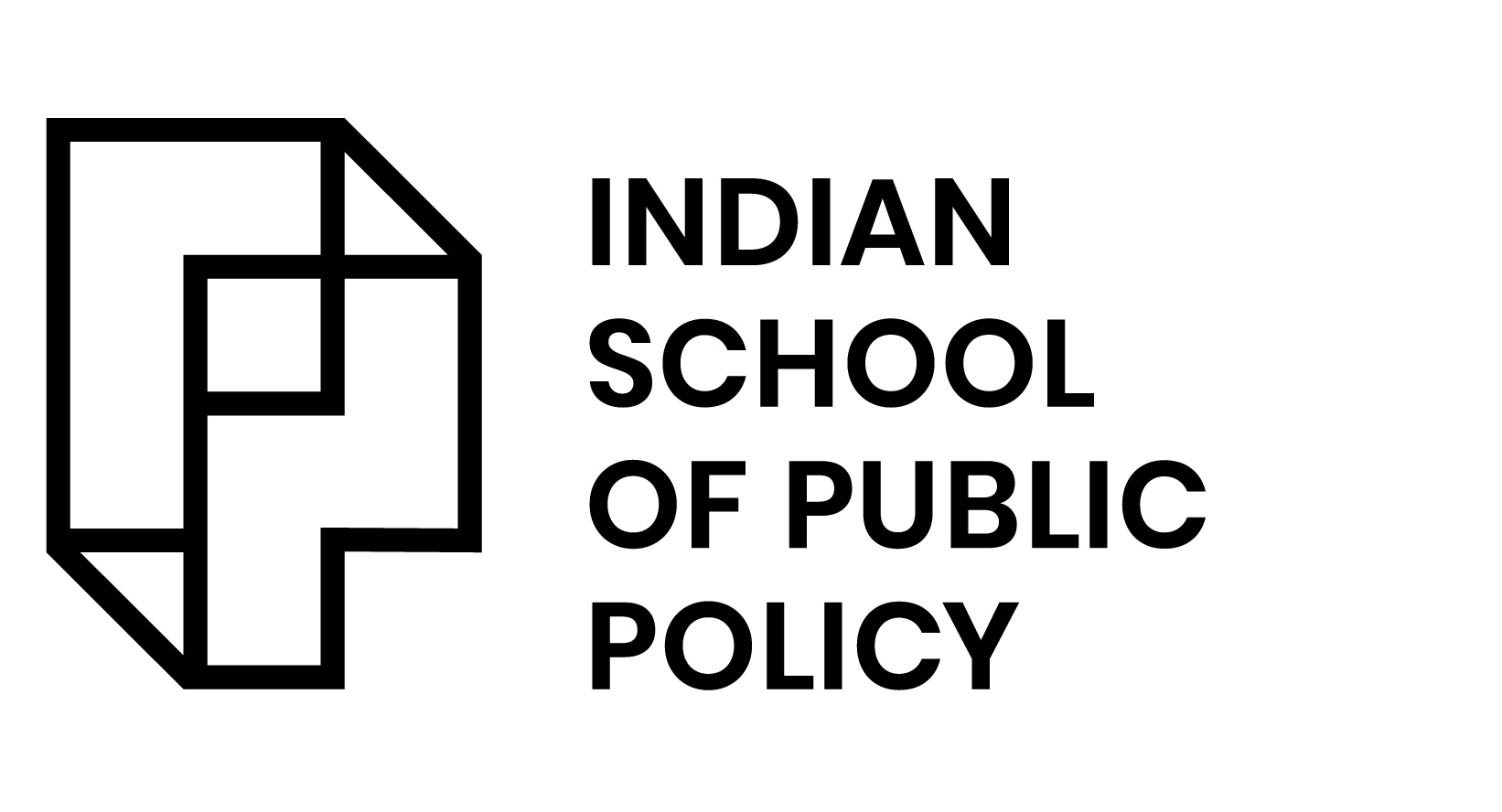
The secret ingredient for effective policy

Harris lecture (Will Gossin): “Effective policy cannot rely on data alone”
Why do we need innovation in public policy? Public policy is incomplete without ‘public’ – the humans making it and being impacted by it. Hence, public policy should be human-centric. The case study of laying pipelines in a village leading to dissatisfaction among the village women is apt to explain this. There, though the policy intent and implementation were right, the ‘public’ was not happy with the outcome. On investigation, it was found that the time women spent fetching water from a faraway source was their socialisation time, a time away from the social bounds, where they felt free. And when that was lost, it was natural for them to be discontented. No matter how advanced and well-targeted the policy is, if it does not consider the socio-cultural needs of the targeted public, it cannot be a successful public policy.
For designing a policy, there has to be an idea/ problem, according to which a strategy is made, followed by a plan, and finally, execution. However, between the idea and the strategy lies a very important but neglected stage/ step- let’s call it the ‘secret’.
Beginnings are special, but almost everyone tends to skip it. We should approach the ground reality and the basic/ preliminary information. Because depending on the way we interpret the problem, we will strategise, plan, and implement the policy. So, if the basis is not clear, the policy can never be successful. Sometimes, while assessing the success of a policy, we tend to focus on what the policy delivered and match the outcomes with the intended benefit/ outcome that the policy was meant to fulfil. This is a problem. Therefore, reaching the root cause of the problem is necessary to define the intended outcomes clearly. As Albert Einstein said, “If I had an hour to solve a problem and my life depended on the solution, I would spend the first 55 minutes determining the proper question to ask, for once I know the proper question, I could solve the problem in less than five minutes.” So, that should be the first step in designing a policy- identification and analysis of the root cause.
But then the question arises – how do we discover ‘the secret’?
The first approach is to look for mismatches. As Kurt Lewin established, a person’s behaviour is a function of their relationship with the environment. We, as policymakers, should strive to look for the mismatches between the environment (policies, social situations etc) and the person before trying to pinpoint problems in the environment or the individual. Every person’s relationship with the environment is different because of their skills, backgrounds, interactions with policies, etc. This can be understood well with the example of disability. A specially-abled person’s inability to access certain public infrastructure is not the problem of the individual but a mismatch of human interaction. Designing public infrastructure should be taken up as a human-centric project rather than an engineering project. Hence, it can be said that every decision/choice made by policymakers can either increase or decrease a certain mismatch in the policy’s effectiveness. Therefore, these choices need to be made responsibly. This can be done by hunting a “better”, i.e., a human-centric theory of the problem.
Once the problem is established, try to solve problems creatively. But where will the creativity come from?
The answer lies in analogical thinking, the second approach leading us to ‘the secret’. Analogical thinking enables us to differentiate between the surface and superficial components of the problem. It also helps us differentiate the structural dimensions of the problem. Studying successful policies and initiatives from different contexts and fields can provide innovative ways to examine a problem. These do not have to be and better not be from the same domain or situation. Successful problem solvers are better able to determine the deep structures of a problem before trying to match a strategy to solve that. The more the number of different analogies drawn to a problem, the more breakthroughs are possible. This is due to the diversity and variety of domains and viewpoints these analogies can provide. And the harder the problem, the more distant it is in terms of field or domain or expertise needed. This enables us to get away from the problem and think from the outside (as suggested by Daniel Kahneman). This OUTSIDE-IN thinking gives us a bird’s eye view of the problem, and we are able to reach the causes invisible in the zoomed picture.
Combining the two approaches, we see that the secret lies in the interpretation of the deep structures of the problem.
This ‘secret’ ingredient is crucial for effective policymaking. However, to fully leverage this crucial ingredient for effective policymaking, we must avoid neglecting data and facts altogether. This secret should be used to extract the right information from the data. Asking the right questions from a human-centric perspective and widening the horizon of seeking that data will be beneficial. The case study of reducing maternal mortality in a region depicts this effectively. The officials were trying to argue that the rates were reduced due to the increase in healthcare facilities in some form, but the actual reason was found to be that a drone company was delivering blood on time.
In conclusion, effective public policymaking necessitates a paradigm shift – one that moves beyond simply targeting the problem to understanding the deeper human needs and interactions at play. By employing a two-pronged approach of root cause analysis through mismatch identification and analogical thinking, policymakers can uncover the invisible social dimensions often overlooked in traditional policy design. However, this “secret ingredient” should not replace data-driven decision-making. Instead, it should serve as a lens to interpret data more effectively and ask the right human-centric questions. Ultimately, this marriage of empathy and evidence will lead to the creation of policies that not only deliver tangible benefits but also respect and enhance the lives of the people they serve.

Nidhi Aggarwal
PDM Scholar, Class of 2024,
Nidhi Aggarwal is a policy analyst exploring the role of technology and innovative solutions for sustainable development. With experience in research, writing, and community work, she analyses governance through an interdisciplinary lens. Nidhi is currently pursuing her PGP in Public Policy, Design and Management at the Indian School of Public Policy, New Delhi. Her interests include urban issues, climate action, and sustainable development.

